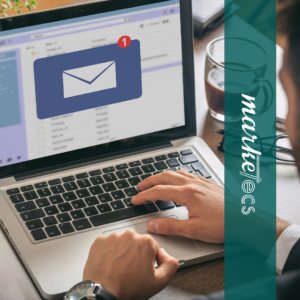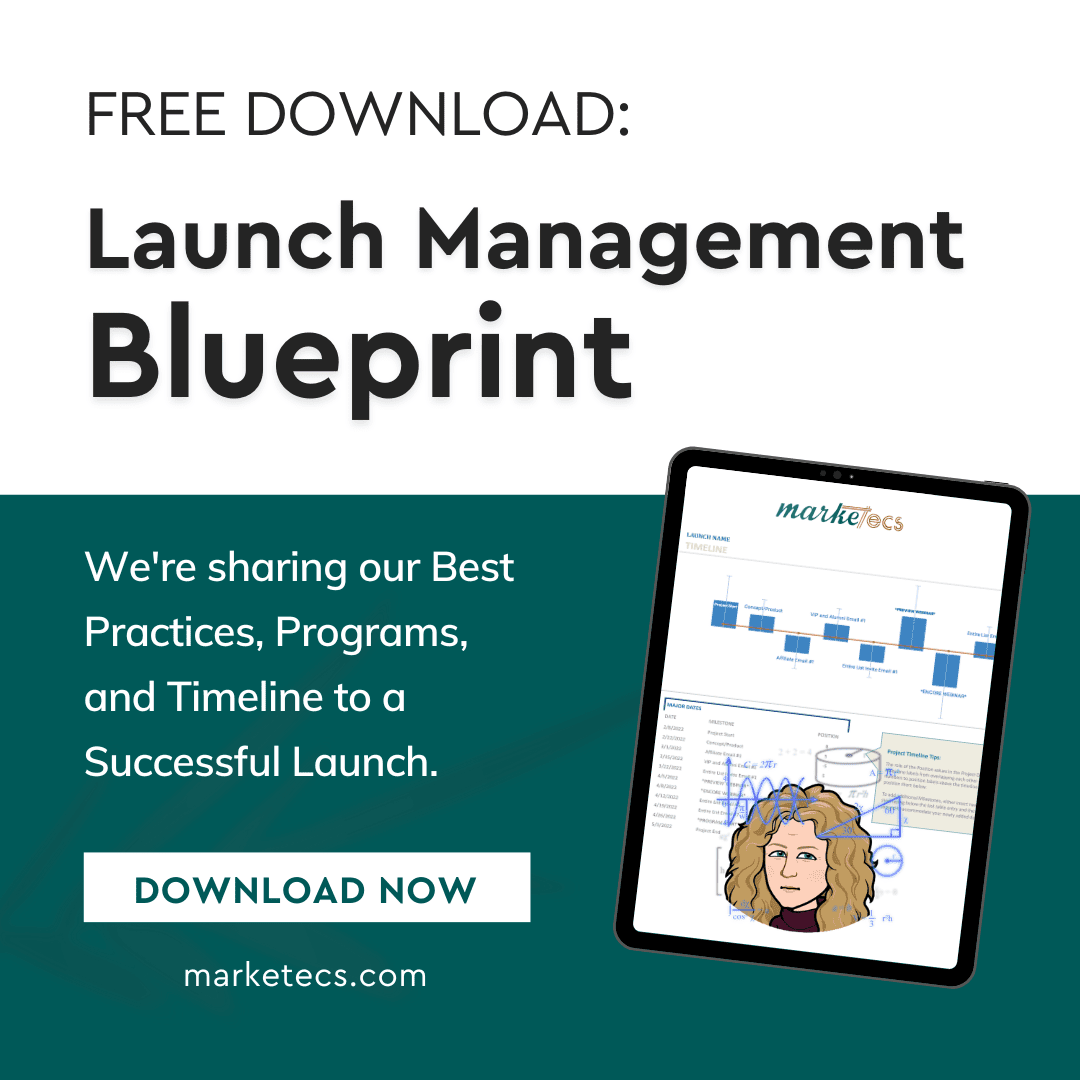Let’s talk about email content that converts. Mastering email conversion should be a huge part of any marketing strategy, and a key component to success.
What You’ll Gain from This Guide:
- Strategies for deeply understanding your email audience and crafting tailored content.
- Actionable tips for writing subject lines and email copy that boost engagement.
- Techniques for creating clear, persuasive calls to action (CTAs).
- Best practices for focusing on benefits instead of features to captivate your audience.
- Effective segmentation strategies for impactful email campaigns.
Why is Email Marketing So Critical?
Your email list is one of your most valuable marketing assets. Each email you send has the potential to either strengthen your relationship with your audience or go unnoticed in their inbox. Crafting email content that drives conversions requires a mix of creativity, strategic planning, and a deep understanding of your audience. Effective email copy can help foster relationships, generate leads, and increase sales—but it’s more than just writing a catchy subject line.
Whether your goal is to increase open rates, boost click-throughs, or drive more conversions, this guide will provide you with the knowledge and tools to turn your email campaigns into powerful drivers of business success.
1. Know Your Audience Inside and Out
Before writing your email content, you need to understand your audience. Who are they? What are their challenges, desires, and needs? By understanding what motivates them, you can tailor your messaging to resonate with their pain points and offer relevant solutions.
For email marketing content, this step should be relatively straightforward. Your email marketing list should consist of ideal clients who have opted in, showing they value your past content—meaning you’re already a step ahead.
Actionable Tips:
- Conduct customer surveys and interviews to learn more about your audience’s preferences.
- Analyze past email metrics like open rates and click-throughs to understand what resonates with your audience.
- Create detailed buyer personas outlining your audience’s demographics, challenges, and purchasing behaviors.
- Tailor your tone, language, and content based on your audience’s preferences.
Formula for Defining Your Audience:
- Audience: [Audience Type] who [Pain Point/Need] and are seeking [Desired Outcome].
- Problems: They struggle with [Specific Problems].
- Solutions: We provide [Your Solution] to help them [Benefit/Outcome].
Example:
- Our audience consists of small business owners who need to streamline their operations and are looking for solutions to save time and reduce overhead.
- They often struggle with managing tasks manually and staying organized.
- We offer automated solutions that help them save time and boost productivity.
2. Craft Engaging Email Subject Lines
The subject line is your first impression — make it count. It’s what will determine whether your email gets opened or ignored. Aim for clarity, curiosity, and value in your subject lines.
80% of readers never get past the headline (Copyblogger), so make it strong and enticing. Headlines with numbers get 36% more clicks than those without (Conductor).
For instance, instead of writing “How to Improve Your Marketing Strategy,” try “5 NEW Marketing Strategies to Land Your Next Speaking Gig.”
As David Ogilvy, the father of advertising, famously said, “On the average, five times as many people read the headline as read the body copy. When you have written your headline, you have spent eighty cents out of your dollar.”
Best Practices for Writing Compelling Subject Lines: 
- Use numbers (e.g., “5 Tips for…”) to grab attention.
- Pose a question that encourages the reader to open the email.
- Offer a clear benefit (e.g., “How to Save Time With…”).
Actionable Tips:
- Write several headline options and test them to see which one performs best.
- Use tools like CoSchedule’s Headline Analyzer to assess headline effectiveness.
Formula for Creating Compelling Headlines:
- [Number or Trigger Word] + [Adjective] + [Keyword/Topic] + [Benefit]
- [How to] + [Achieve Desired Outcome] + [Without Pain Point]
Example Subject Lines:
- “5 Proven Strategies to Skyrocket Your Content Engagement”
- “How to Increase Website Conversions Without Spending More on Ads”
Tangible Tips:
- Craft subject lines that are personalized (e.g., using the recipient’s name) or offer value (e.g., “Unlock Your Free Guide”).
- Test different subject line variations through A/B testing to determine which drives the highest open rates.
3. Focus on Benefits, Not Features
Your audience doesn’t care as much about what your product does as they do about how it will make their lives better. Highlight the benefits and show how your solution addresses their challenges.
87% of consumers state they will only consider purchasing a product if they comprehend how it benefits them (SurveyMonkey).
For instance, instead of simply stating that your software has “automated reporting,” emphasize how this feature saves time, reduces errors, and allows business owners to focus on growth rather than manual tasks.
How to Effectively Highlight Benefits
- Use the “So What?” test: For every feature, ask yourself, “Why does this matter to the customer?”
- Be specific about how your product or service will improve your customer’s life.
Action Tips:
- For each feature, list corresponding benefits that directly relate to your audience’s needs.
- Use customer testimonials or case studies to illustrate real-world benefits.
Formula for Writing Benefits-Focused Content:
- Feature: [Your Product Feature]
- Benefit: This means that [Audience Benefit].
- So What? So you can [End Result/Outcome for the Customer].
Example:
- Feature: Our tool offers automated sales and marketing management, all in one platform.
- Benefit: This means that you can save time and streamline your software usage, while improving your marketing and sales efforts.
- So What? So you can focus on growing your business, with improved marketing and sales capabilities, without managing extra tasks or expensive software.
Tangible Tips:
- Lead with the primary benefit in the opening sentence of your email to immediately capture the recipient’s interest.
- Use customer success stories or case studies in email campaigns to show the real-world impact of your services.
Pro Tip: Use the “So What?” test for every feature you mention. This will help you highlight the benefits effectively.
4. Create Clear, Action-Driven CTAs
Your Call to Action (CTA) should be direct, clear, and compelling. Use action-oriented language like “Download Now” or “Get Started” to encourage readers to take the next step. Ensure your CTA is prominent and easy to click on all devices, especially mobile.
A potent CTA can significantly enhance conversion rates — employing a CTA button rather than a text link can elevate conversion rates by 28% (Campaign Monitor).
As Kevin Roberts, the former CEO of Saatchi & Saatchi, aptly puts it, “Every communication is a call to action. If there is no call to action, you have not communicated.”
Key Elements of an Effective CTA:
- Use straightforward language: “Download Now” or “Get Started.”
- Incorporate action-driven words such as “Start,” “Join,” or “Discover.”
Actionable Tips:
- Position your CTAs strategically throughout the email, especially above the fold.
- Use action-driven words like “Start,” “Join,” or “Get.”
- Test different CTA texts and placements to see which generates the best results.
Formula for Crafting Effective CTAs:
- Action Word + [What They’ll Receive] + [Benefit/Timeframe]
- CTA + Urgency + Value Proposition
Example CTAs:
- “Download Your Free Guide Now and Start Seeing Results Today!”
- “Start Your Free Trial Today — No Credit Card Needed!”
Practical Tips:
- Include a single, focused CTA in each email to avoid overwhelming the reader.
- Ensure your CTA buttons are visually distinct and easy to click, especially on mobile devices.
5. Personalize Your Emails
Personalization is an essential key to driving engagement. Generic emails simply don’t perform as well as those tailored to the recipient’s preferences and past behaviors. Emails with personalized subject lines are 26% more likely to be opened (Campaign Monitor).
Actionable Tips:
- Segment your email list by behavior, demographics, or interests.
- Use dynamic content blocks to personalize each email based on recipient data.
- Include personalized subject lines or greetings to make your emails stand out.
Practical Tips:
- Adopt a narrative format in email campaigns, weaving a story about how your product helped solve a problem or made a notable impact.
- Include a customer journey story in your emails, illustrating the transformation from challenge to success.
6. Write for Skim Readers
Most readers skim emails instead of reading them word for word. Enhance readability by using subheadings, bullet points, and short paragraphs to highlight key information and make your emails easier to digest. 43% of people admit to skimming blog posts, and readability can be enhanced by 58% through the use of subheadings and lists (Content Marketing Institute).
Actionable Tips:
- Break up long sections with subheadings.
- Use bullet points to highlight key takeaways.
- Make your CTAs stand out by using bold text or buttons.
- Keep paragraphs concise, focusing on one idea per paragraph.
Formula for Creating Easily Skimmed Content:
- Start with a clear and concise heading: [Short and Descriptive Heading]
- Divide sections with subheadings: [Benefit or Key Point]
- Utilize bullet points for lists:
- [First key benefit]
- [Second key benefit]
- Conclude with a bolded CTA: [Action + Value Proposition]
Example:
- Boost Your Productivity with These Simple Tools.
- Automated Solutions.
- Save Time with Automated Email Campaigns.
- Track Results Instantly with Real-time Reporting.
- Sign Up Now for a Free Demo!
7. Test and Optimize Your Emails
Even the best email campaigns can be improved. Continuously test different subject lines, CTAs, formats, and content to find what works best with your audience. Use analytics to monitor open rates, click rates, and conversions, then adjust your strategy accordingly.
Companies that employ A/B testing see an average increase of 37% in conversion rates (Invesp). Testing various elements can help you pinpoint what works best with your audience.
David Ogilvy’s advice remains relevant: “Never stop testing, and your advertising will never stop improving.”
Actionable Tips:
- Schedule regular content audits to identify what’s effective and where improvements are necessary.
- Use data from your tests to continually refine your approach and boost your conversion rates.
Formula for Testing and Optimizing Content:
- Identify Variable: [Element to Test, e.g., Subject Line, CTA, Image]
- Create Variation: [Version A] vs. [Version B]
- Measure: Track [Metric, e.g., Click-Through Rate, Conversion Rate]
- Implement Winning Strategy: Based on [Test Results], use [Winning Element] in future content.
Example:
- Test the subject line: “Increase Your Revenue by 20% in 6 Weeks” vs. “Grow Your Business Fast with These Proven Strategies.”
- Measure open rates for each subject line.
- Implement the winning subject line across your other marketing assets.
Practical Tips:
- Utilize A/B testing to compare different subject lines, CTA buttons, or email designs and track what leads to higher open and click-through rates.
- Regularly review email performance metrics (e.g., open rates, click-through rates, and conversion rates) to pinpoint areas for improvement.
Content that Converts Pro Tip: Employ A/B testing to compare versions of your content and identify which performs better in terms of conversions.
Accomplish your Email Marketing Goals
Creating email content that converts doesn’t have to be overwhelming. By understanding your audience, writing compelling subject lines, focusing on benefits, and providing clear calls to action, you can turn your emails into powerful tools that drive engagement and conversions. The key is consistency — test, optimize, and keep refining your strategy for the best results. Start using these strategies today to create email content that truly resonates and converts.
To implement a successful email marketing strategy, you need an email marketing solution that can keep up with your demands.
Well, we have a solution! Marketecs Engine! Our software is an online sales, marketing, CRM & automation platform – take the hassle out of email marketing with our unlimited templates, forms, and automated workflows.
Marketecs has been offering marketing automation support services since 2009, using all the major platforms, which means our experts can help answer any questions you may have.
Learn more about Marketecs Engine or contact us to schedule a consultation and discuss your options.


